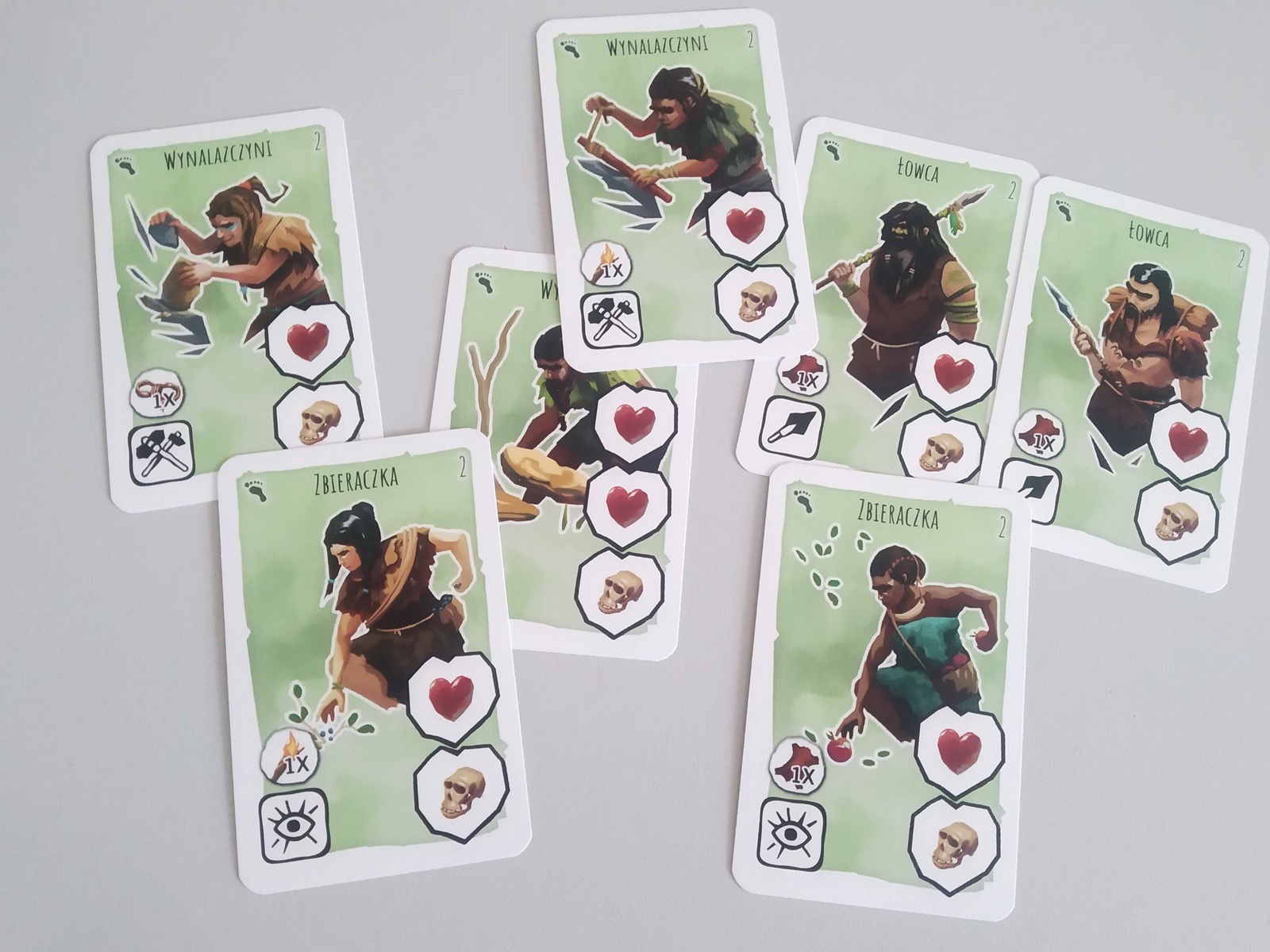Flint.
I heard about this game for the first time on the occasion of (Kenner) spiel des Jahres 2021. You can agree more or less with this type of prizes (usually it’s a popularity contest), but in recent years this title has been awarded to titles that later became very popular ( eg Crew , On wings , Charlatans ). For this reason, I believe that it is worth observing them closely.
In the second paragraph, I usually try to briefly mention a few facts about the author of the game – in this case, however, there is not much to talk about, because Mr. Rustemeyer is at the beginning of his authoring career (according to BGG, he created another game that I had never had the pleasure to hear about before. ).

Torches.
Paleo has quite a nice cardboard box with a mammoth, inside which there is a handy cardboard molding and a few boards, a whole lot of very nicely illustrated cards, a lot of tokens, markers of basic raw materials, as well as an instruction and an attachment to it about scenarios. From the performance side, there is nothing to complain about, and I forgot to mention the folding card holders. A very solid job. Both written documents are also of a high standard, as far as I’m not mistaken I only noticed a typo or two.

Mammoths take over!
We are dealing here with a game for one to four people. Personally, I am not a fan of solo games and in my opinion the optimal approach to this title will be two (a bit more difficult) or three players. The game can end in two ways: a defeat (after collecting five skull tokens) or a victory for the players (five mammoth tokens). Simple.
Skulls are obtained by failing to fulfill the objectives of the scenario or by losing members of your tribe. Getting the tokens for this cute fluffy elephant is a bit more complicated, and in different scenarios, the way it is done is slightly different – except for some idea cards which, with a bit of luck, can appear in any game.

How is it played? First, you need to prepare a scenario – initially, it is worth trying those included in the appendix, but then you can combine them freely. The cards are divided into decks – some of them always play (dreams, ideas, people, basic card module) – others depend on the scenario – and so we will hunt mammoths in search of food once, and then try to cross the river another time. Or both. I like this layout very much and it makes the setup of this game very simple and fast. The cards are then shuffled and some of them remain on the table as draw piles, and the rest are dealt more or less evenly among the players.

The actual game consists of drawing three cards and choosing one of them on the back – different types of cards, different backs. All players then turn these cards at the same time and resolve them. Unless explicitly stated, it may be done in any order. After all cards have been resolved, this cycle repeats until each player runs out of these cards – then it’s time to feed the people and check the scenario’s cells. If we cannot afford enough food – for each hungry tribe we get a skull token – if we did not meet the requirements of the scenario – the same. Unless the game has just ended, the next round begins with shuffling the cards and dealing them. And so to victory. Or failures.

Is it worth it?
We managed to play Paleo about 20 times. The first impression was that the game is very difficult. Too much. Then it turned out that we had misinterpreted one of the rules and it was a bit easier. Although we lost again. I think these initial failures had some positive effect on the game’s willingness to prove that we are, after all, fit for more than just rubbing horseradish.

The gameplay is fast, exciting – very random (attention!). This is drawing one of the three half-blind cards – a very nice idea. Great variety of scenarios. The modularity that I have already praised deserves one more mark of recognition – I really like this element in the replayability grant. Of course – the game is the most impressive on the first try – knowing the cards is a huge advantage here and it changes the game to a large extent. Even if I wanted to, I don’t have much to complain about. I am waiting impatiently for the addition and I can not wait for the new scenarios – two mini extras bought and played long ago.

As this review appears with a considerable delay, I decided to add two sentences after the time. I think that the most difficult and interesting game to play in Paleo is definitely the first time around. Knowing the cards makes the game much easier and less interesting, although in my opinion it is still a very good co-op game of medium gravity. I had a lot of fun and my teddy mammoth even better.

